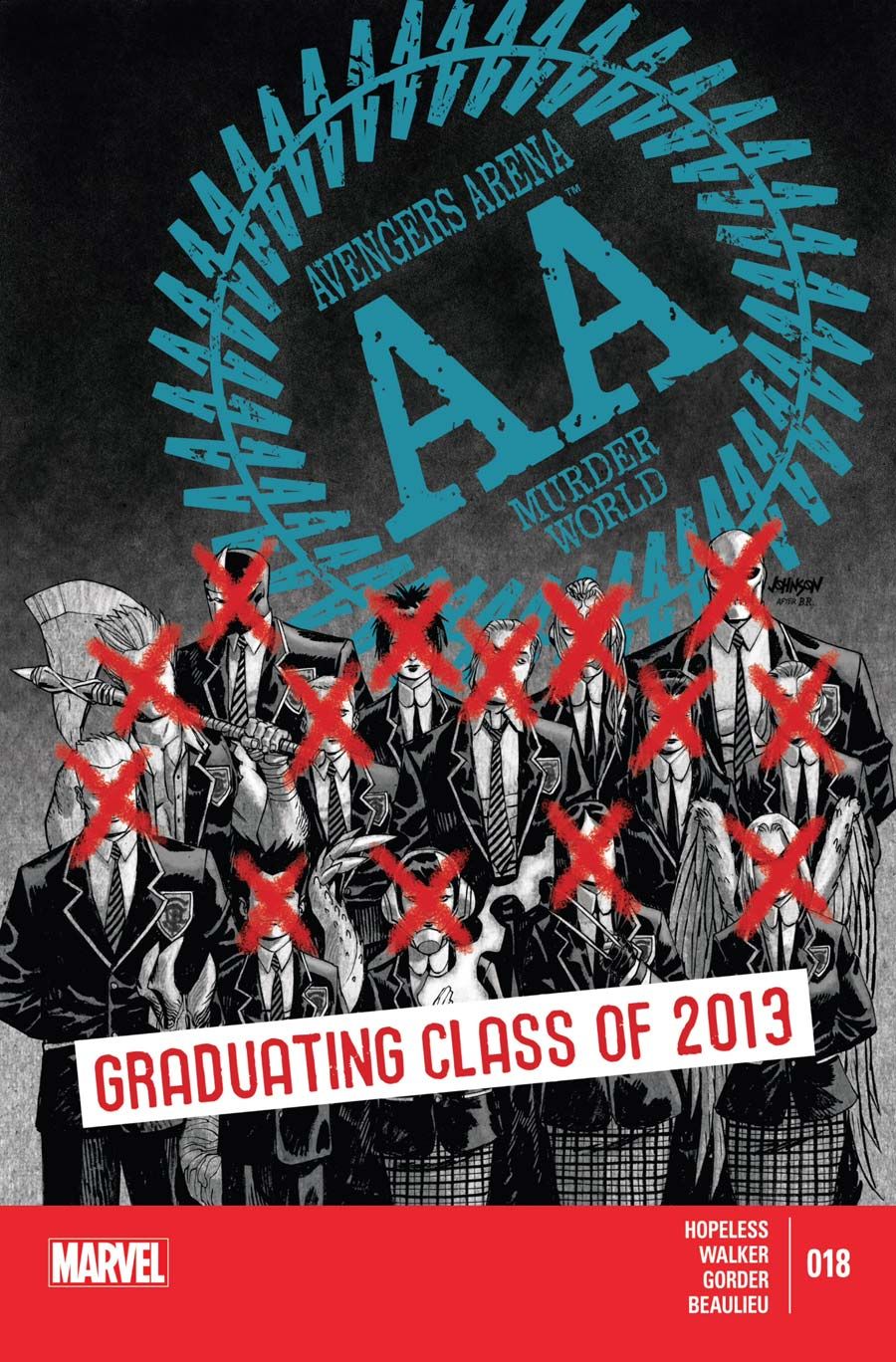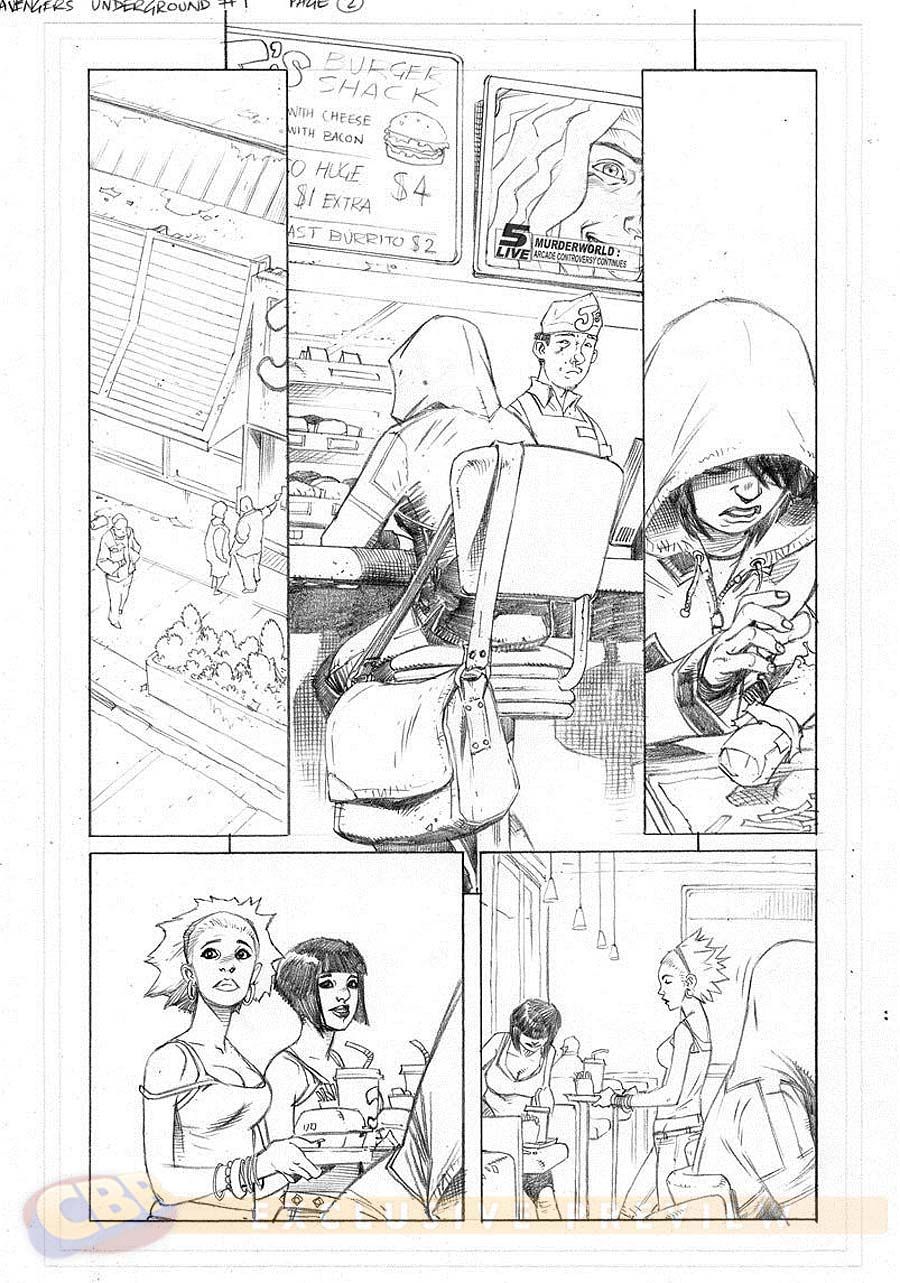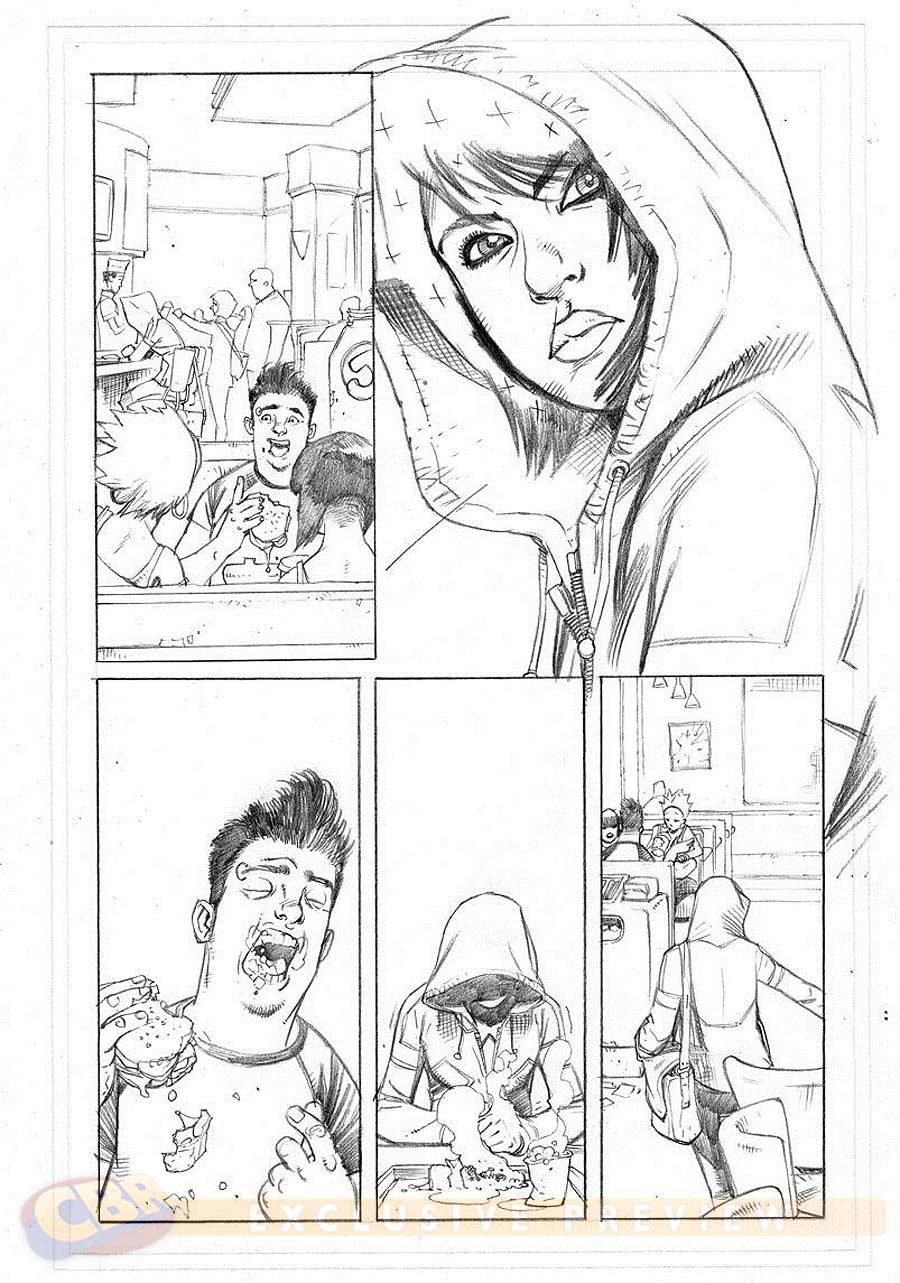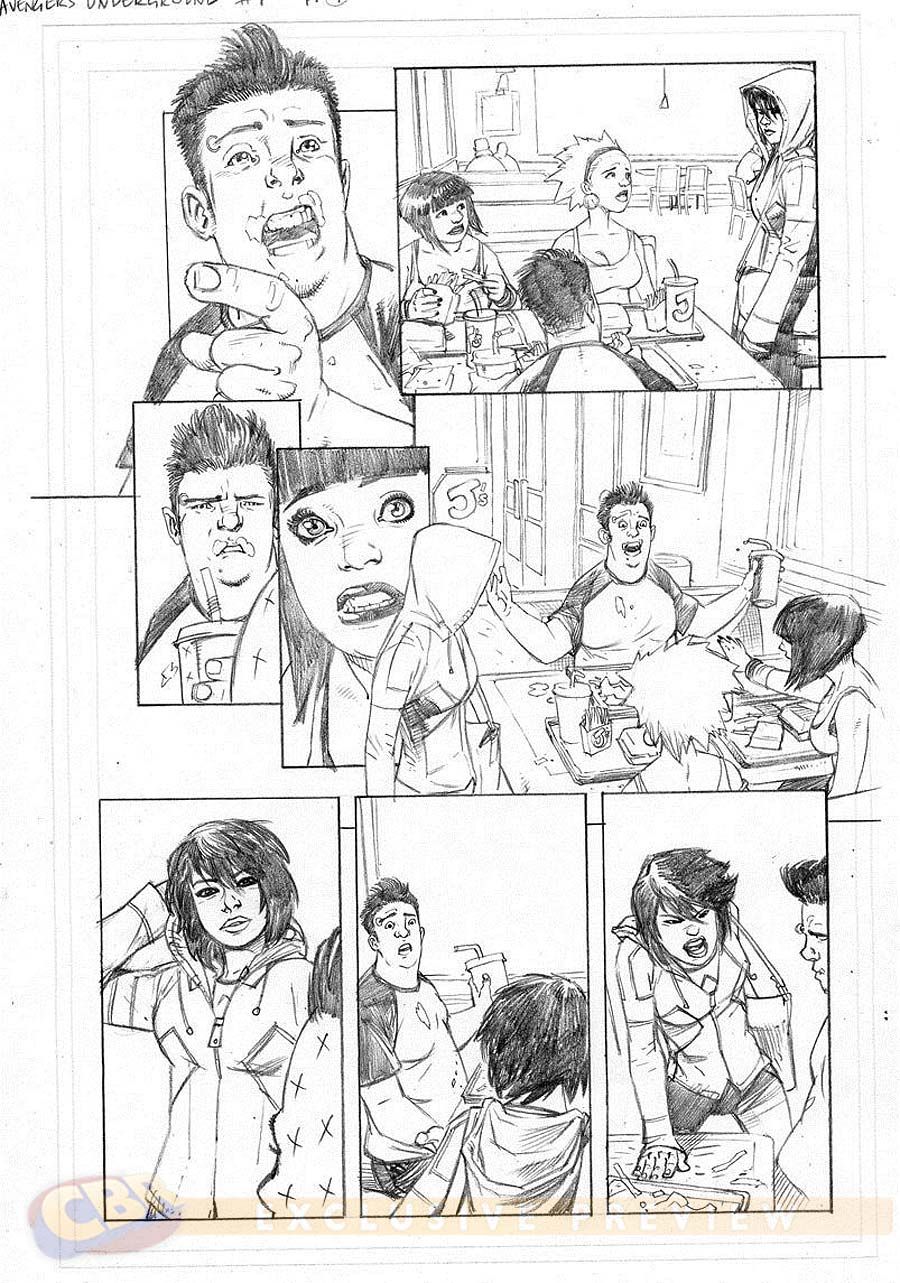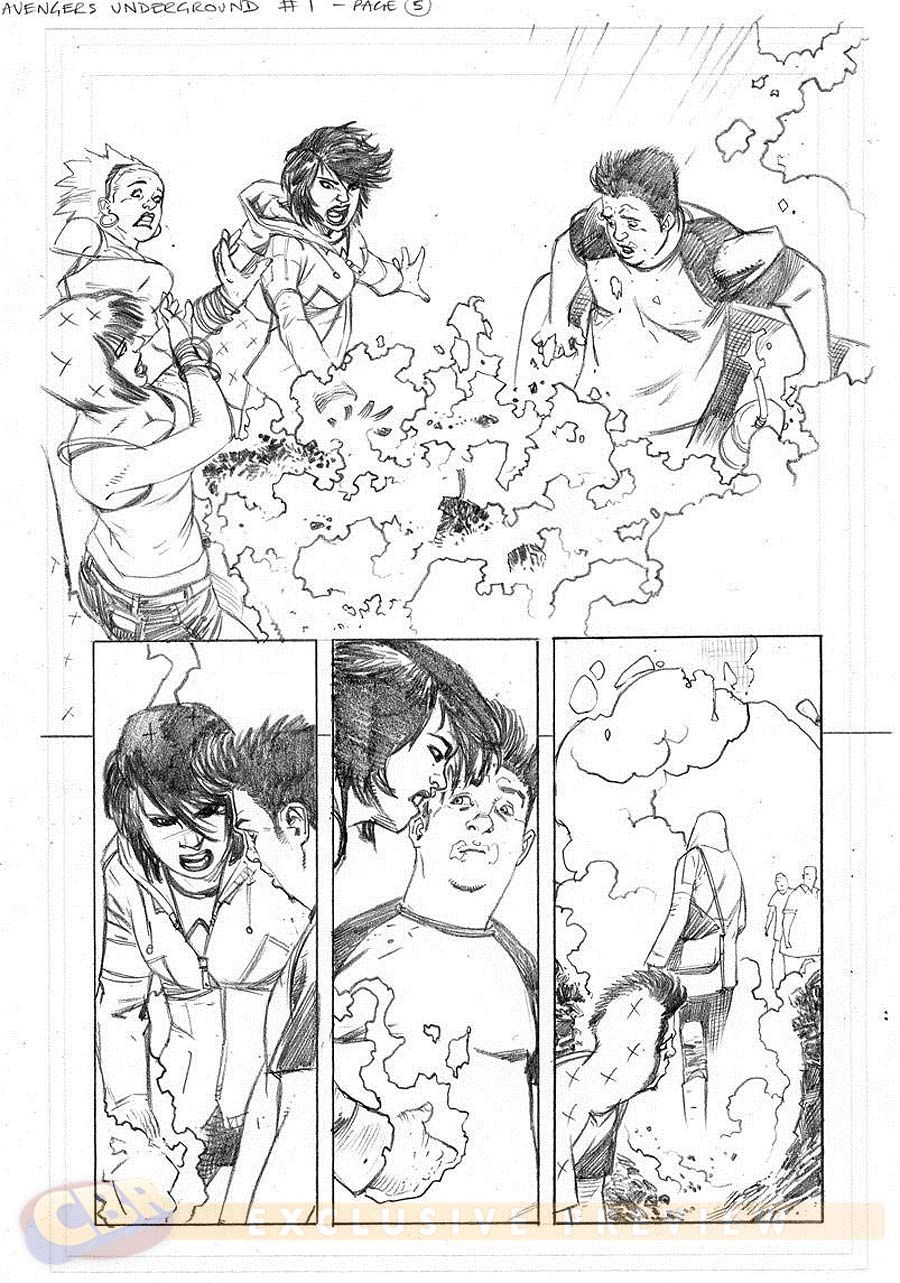SPOILER WARNING: This interview contains spoilers for "Avengers Arena" #18, on sale now.
A number of training schools for superpowered youngsters recently began popping up across the Marvel Universe. The purpose of these institutions is to prepare teenage superheroes for whatever Marvel's villains might throw at them, so the faculty try to anticipate the types of scenarios their students might face. But none of them imagined the events of "Avengers Arena,", and what they would find when they arrived at the remote island that housed the latest Murder World devised by psychopathic gamesman Arcade.
What they discovered were the survivors of a 30 day long deathmatch that Arcade had forced abducted students to participate in. The events of this bloody affair were chronicled in the recently concluded "Avengers Arena" series by writer Dennis Hopeless, and this March several of the survivors will move into a new, potentially even more dangerous world when Hopeless and his primary "Avengers Arena" collaborator, artist Kev Walker, kick off their new ongoing series "Avengers Undercover." CBR News spoke with Hopeless about the events of "Avengers Arena," and how they'll impact the protagonists of his new series.
CBR News: In its final issue, you reveal that when "Avengers Arena" was first being developed, you had some of the same doubts fans did when they first heard about the series. At what point in developing and writing the series did everything start to click for you? And how does it feel to bring that story to a close?
Dennis Hopeless: Yeah, early on, my editor Bill Rosemann and I were pitching a straightforward superhero high school book. It was going to be a "Skins"-inspired series dealing with some of the more unseemly elements of teenage life. But when Tom Brevoort and Bill discussed it with [Marvel editor-in-chief] Axel Alonso, Axel pointed to an early plot outline for the book that featured an arc in which a multi-school competition devolved into "Battle Royale" when a supervillain took control, and suggested we make that deathmatch scenario our central premise. My initial reaction was -- well, I hated the idea.
But, like I explain in "Avengers Arena" #18, it turns out they were right. "Avengers Arena" is exactly the book we needed to do and I'm thrilled we took their advice. That fact started to click while I was plotting the first arc. There was so much drama built into the scenario and it allowed us a lot of freedom to do character work. By the time I started scripting issue #1, I was totally on board and never looked back.
When "Avengers Arena" first began Arcade was the main villain, and while his villainy loomed large over the entire volume, another character stepped forward into an antagonist role -- Katy Bashir, a.k.a. Apex, who you co-created. So let's talk about the development of her character. What inspired her creation? Did you always know Katy was going to be a bloodthirsty, manipulative, megalomaniac? Or was that something you discovered as you began to write the series?
I still don't think of Katy as the villain. She definitely took a dark turn somewhere and lost her way, but I never lost track of her perspective. In a way, I think the Apex Twins are tragic characters. They're a product of their unfortunate situation. Don't get me wrong, Katy is clearly a twisted individual with dark secrets (the girl did fake her brother's death and imprison him in their shared brain), but deep down she's just an opportunist. She makes whatever reactionary moves she thinks will improve her situation. That's a pretty human flaw, especially for a teenager. It's totally possible that without Arcade's intervention, Katy would have grown out of her selfishness, released her brother and become a legitimate hero.
As for what inspired the character -- a lot of different things. Katy and Tim have a pretty complex relationship that plays on a lot of family and identity issues that teenagers struggle with. They have to share a body and memories. They shift genders and personalities. They're forced to deal with the consequences of their sibling's actions even though they have no power to affect them. Like a lot of the characters in "Arena," I could write a whole series about Tim and Katy.
Katy was killed in "Avengers Arena" #18, the final issue of the series, but Arcade escaped and if the last panel of the issue is any indication, he might be about to achieve the respect he felt he deserved. Why did you choose to have Arcade escape? Did he essentially achieve the goal he wanted to accomplish in "Avengers Arena?" And are you finished with the character, or is there a chance he may show up in "Avengers Undercover?" I believe the character does have a history with Bagalia.
In my mind, Arcade had to win. The whole point of the series was putting these characters against an unwinnable scenario and showing how it changed them. This was never a story about perfect heroes who win out despite the odds. It's a story about a worst-case scenario and what it takes to survive. At the same time, we didn't want Arcade to succeed in killing all of these characters. There are a lot of stories left to tell with them, especially now that the world knows what they've just been through.
Arcade definitely thinks he's won, both the game and the respect of the world. In "Avengers Undercover," we'll be dealing with an Arcade who is on top of the world. He's basking in the afterglow of his greatest victory, while the survivors are dealing with the consequences of defeat. Our first arc deals heavily with both situations.
Before we move into "Avengers Undercover" I want to talk a little more about the survivors of "Arena" and the world's reaction to their plight. Let's start with someone who may or may not have survived. Is that Reptil being taken to the helicopter on a stretcher at the end of "Avengers Arena" #18? And if so what kind of shape is he in?
As far as we can tell, Reptil blew up saving everyone from Hazmat's nuclear detonation. There are a lot of interesting things happening on those two aftermath pages. I'll leave careful readers to make their own conclusions.
Reptil risked his life to save Hazmat and I noticed after the explosion in "Avengers Arena" #18, she was walking around without her suit and didn't appear to be emitting any toxins. Plus, on the cover of "Undercover" #1 a character that appears to be her is not wearing her full suit. So did the explosion at the end of "Avengers Arena" #18 change Hazmat's powers, or alter the way they manifest?
Yes. One of the big changes for Hazmat after Murder World is that she has gained total control of her radioactive powers. She no longer has to wear her hazmat suit 24/7 and can live a much more normal life. We've essentially granted Hazmat's greatest wish. All she had to sacrifice was everything.
We know X-23 is moving on to "All-New X-Men" and Hazmat, Anachronism, and Bloodstone are headed into "Avengers Undercover," and Chase and Nico will presumably reunite with the Runaways. That leaves Cammi and Darkhawk. How would you describe their mental states at the end of "Avengers Arena?" What are they thinking about and dealing with? And are you able to reveal if you or Marvel have plans for these characters?
Cammi is coming with us to "Avengers Undercover," so we'll be dealing with that directly. And don't be so sure about our Runaway survivors.
As for Darkhawk -- we've given Chris Powell back his amulet and sent him on his way. Chris was out of place in Murder World. Arcade made the mistake of putting an adult super hero into a teenage death match. Chris could have won the game day one but he wouldn't. If Katy hadn't taken him out so early, Chris never would have stopped trying to bring Arcade down and save everyone's life. That was kind of the point. From a story perspective, Chris was like the hero cop who dies in act one leaving behind his gun.
Let's move onto the discovery of Murder World by the three headmasters -- Hank Pym, Wolverine and Captain Britain. How are they handling the discovery of what happened to their kids? Has the fact that the kids refused to talk about what happened made things even worse for them?
There are a couple panels at the end of "AA" #18 that deal with how the adults feel. They've been hit hard by the revelation. These kids were their responsibility and they totally failed to protect them from Arcade's torture. They share a silent moment in the book. There are no words.
The kids make a pact not to talk about Murder World, but Arcade pretty quickly takes that from them when he uploads the video. They may not talk about what happened, but now the whole world will know.
Let's finish up by chatting a little bit more about "Avengers Undercover." How much story time passes between the end of "Avengers Arena" #18 and "Avengers Undercover" #1? What can you tell us about your teen cast and the world's reaction to the video that Arcade uploaded at the end of "Arena" #18?
A few months have passed. The kids have become Internet celebrities and whether they like it or not, everyone has an opinion about how Murder World played out. That celebrity is one of the things that sends the survivors on their new path. They no longer fit into their old lives and they're desperate to change the world's perception of them. They want to be known as something other than victims.
Can you talk about, hint, or tease the incident that gets the plot rolling in "Avengers Undercover"#1? What can you tell us about the reason why your cast decides to go to Bagalia and go undercover in the Masters of Evil? And can you talk about the Masters of Evil's reasons for allowing the kids to join their ranks?
It all starts with Cullen. He's fallen into the deep end since leaving Murder World and the other survivors get pulled into his crazy. Where the Masters of Evil fit into all of this -- well, you'll see.
Finally, "Avengers Undercover" continues your collaboration with Kev Walker, who knows your protagonists very well. What can we expect from Kev's work with the Masters of Evil? Are there any members of that group that he seems to especially enjoy drawing?
Most of the art I've seen so far has focused on the kids. Some of them have been redesigned to reflect their post-Arena lives and mental states. I'm excited to see what Kev does with all of the villains. We'll be fleshing Bagalia out quite a bit, and I love that Kev gets to design everything. Daimon Hellstrom's Hell Town district has me particularly stoked.


